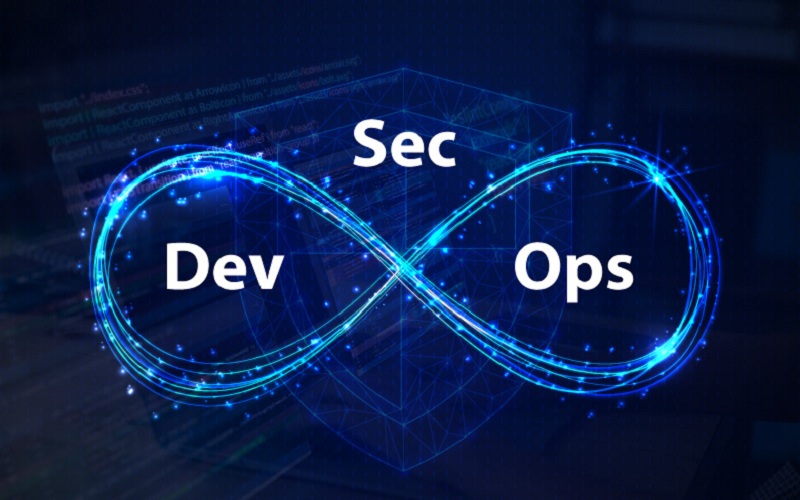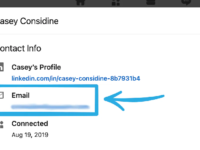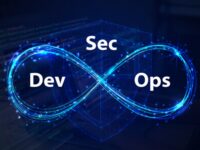Mastering DevSecOps: Essential Best Practices

Introduction:
For software development in today’s time, which is fast-paced and powered by technology, cybersecurity practices that run within the cycle of software development should be considered of the topmost priority. DevSecOps Best Practices stands out as a crucial methodology, which embodies development, security, and operations ( DevSecOps ) to ensure this integration is applied. Through integrating security into every single development stage, DevSecOps ensures that the applications are construct, check, and implement in a secure manner. In this guide, let’s cover what needs to be done to make your DevSecOps more robust, thus increasing the security of your application delivery processes.
Understanding DevSecOps:
Constructed on the foundations of a cultural shift in the enterprise’s relation to software development and delivery, DevSecOps involves software and infrastructure security along the whole SDLC life cycles. On the contrary, the DevSecOps shift in focus makes security a fundamental consideration which requires not only secure solutions, but a unified, collaborative, and proactive environment. Through the destruction of the wall between code development, security, and operation organizations teams, the gap can be bridged, improved collaboration can be achieved and the delivery of software remains secure at the same speed.
Shift-Left Security:
A key principle of DevSecOps is the full-scale shift-left security model, which highlights the necessity to address security concerns right from the start of the software development lifecycle (SDLC). Through early detection and prevention of weaknesses that might lead to security complications, it becomes simpler to keep the issues from seeding downstream in a more noticeable and costly way. The proposed approach of creating an atmosphere of interactive security culture necessitates developers to take-up a bigger role of security and thereby, make security testing and analysis a part of their daily routine.
Automation:
Automation is a primary driver of the task, viewed from the perspective of DevSecOps initiatives. Using security automation tools to perform different processes including code analysis, vulnerability scanning, and compliance checks can significantly speed up delivery cycles and be maintained at the same time the desired level of security. Automation prevails not only increase in efficiency but also declare repeatability and consistency, accordingly elimination the errors related to human and the weaken point connected with manual interventions.
Continuous Integration and Continuous Deployment (CI/CD):
CI/CD pipeline is the fundamental block of the development processes in DevSecOps which is playing the role of an engine to deliver the software updates speedily and safely. Through the automation of build, test, and ship processes, CI/CD pipelines become the battery for every phase of the security checks. Disciplines like static code analysis, dynamic application security testing (DAST), and container scanning can be automatically infused with CI/CD workflows and yield developers immediate secure code approval so that only this type of code gets to production.
Container Security:
Due to the widespread acceptance of the containerization and microservicesarchictectures, security of containers has emerged as a serious issue that the DevSecOps specialists operate with. Containerization has facets such as scaling/portability that are pros compared to traditional platforms, but it also introduces new security challenges which can be difficult to address. Using only significantly appreciated containers security measures, like image scanning, runtime protection, and also the least privilege access controls, is very important in overcoming risks related to environment with containers and to secure targeted workloads as well.
Infrastructure as Code (IaC):
IaC is once again one of the important tools that enable DevSecOps. This is this way that the organizations make it possible to work with the infrastructure configuration declarative via the code. One such instrument goes to the point: virtual machines and related infrastructure can be treated as code what means the same methods as for app development: versioning, testing and review can be applied to infrastructure definitions. This approach not only increases the scale and repeatability but also the strength of security mechanisms with a lower number of manual interventions and a control on the adherence of infrastructure configurations to the security policies and standards.
Security by Design:
Security approaches mingled at the design stage of software development would enable the emergence of reliability and secure applications. “Security by design” approach is more productive in that it makes it possible to detect security gaps as well as threats and vulnerabilities at the design and build stage right from the beginning. This is done through conducting threat modeling, performing risk assessment and setting up security controls that are the part of the elemental structure of the application architecture and design.
Collaborative Culture and Cross-Functional Teams:
DevSecOps forms its strength or core concerns from cooperation or relationships among differently skilled teams. Firstly, eliminating the segregation between development, security, and operations leads to a culture of teamwork and an accepting attitude that everyone bears responsibility and accountability for security goals. Through implementing open communication, knowledge sharing, and collective ownership of security goals, organizations can adopt the respective unique skills of staff members to work towards the reduction of any security risk appropriately.
Continuous Monitoring and Feedback Loop:
Efficient DevSecOps procedures should not only go hand in hand with development and delivery but should spreading also over the post-delivery period and the whole feedback cycle. Through use of monitoring nice and addictive machinery organizations are able to react on informations about eventual breach in due time before it is too late. Moreover, the feedback system is intended to generate results and effects from production environments wherein the DevSecOps team can analyse both the effectiveness of security controls and continuously improve the quality of the DevSecOps process.
Conclusion:
DevSecOps is stand for the change in philosophy that is using in by software development companies and security systems that involve people working together, automation, and continuous improvements, respectively. At the time of implementing security in the whole-process of software delivery lifetime, an organization will be made to believe that not security is a barrier but an enabler of innovation. Organizations should accept the DevSecOps standards in order to increase the security level, prevent the risks, and provide customers with better quality products and services in the shortest time with security






